15.2 Anxiety Disorders, OCD, and PTSD
Anxiety is part of life. Speaking in front of a class, peering down from a ladder, or waiting to play in a big game, any one of us might feel anxious. Anxiety may even cause us to avoid talking or making eye contact—
620
Anxiety Disorders
anxiety disorders psychological disorders characterized by distressing, persistent anxiety or maladaptive behaviors that reduce anxiety.
15-
The anxiety disorders are marked by distressing, persistent anxiety or dysfunctional anxiety-
- Generalized anxiety disorder, in which a person is unexplainably and continually tense and uneasy
- Panic disorder, in which a person experiences panic attacks—sudden episodes of intense dread—and fears the unpredictable onset of the next episode
- Phobias, in which a person is intensely and irrationally afraid of a specific object, activity, or situation
Generalized Anxiety Disorder
generalized anxiety disorder an anxiety disorder in which a person is continually tense, apprehensive, and in a state of autonomic nervous system arousal.
For the past two years, Tom, a 27-
Tom’s unfocused, out-
The person may not be able to identify, and therefore relieve or avoid, the tension’s cause. To use Sigmund Freud’s term, the anxiety is free-
Women are twice as likely as men to experience generalized anxiety disorder (McLean & Anderson, 2009). This anxiety gender difference was reflected in a Gallup poll taken eight months after 9/11, when more U.S. women (34 percent) than men (19 percent) said they were still less willing than before 9/11 to go into skyscrapers or fly on planes. And in early 2003, more women (57 percent) than men (36 percent) said they were “somewhat worried” about becoming a terrorist victim (Jones, 2003).
Some people with generalized anxiety disorder were maltreated and inhibited as children (Moffitt et al., 2007a). As time passes, however, emotions tend to mellow, and by age 50, generalized anxiety disorder becomes fairly rare (Rubio & López-
panic disorder an anxiety disorder marked by unpredictable, minutes-long episodes of intense dread in which a person experiences terror and accompanying chest pain, choking, or other frightening sensations. Often followed by worry over a possible next attack.
Panic Disorder
For the 1 person in 75 with panic disorder, anxiety suddenly escalates into a terrifying panic attack—
hot and as though I couldn’t breathe. My heart was racing and I started to sweat and tremble and I was sure I was going to faint. Then my fingers started to feel numb and tingly and things seemed unreal. It was so bad I wondered if I was dying and asked my husband to take me to the emergency room. By the time we got there (about 10 minutes) the worst of the attack was over and I just felt washed out (Greist et al., 1986).
621

These anxiety tornados strike suddenly, wreak havoc, and disappear, but they are not forgotten. Ironically, worries about anxiety—
Charles Darwin began suffering panic disorder at age 28, after spending five years sailing the world. Because of the attacks, he moved to the country, avoided social gatherings, and traveled only in his wife’s company. But the relative seclusion did free him to focus on developing his evolutionary theory. “Even ill health,” he reflected, “has saved me from the distraction of society and its amusements” (quoted in Ma, 1997).
Smokers have at least a doubled risk of panic disorder (Zvolensky & Bernstein, 2005). They also show greater panic symptoms in situations that often produce panic attacks, such as when they hyperventilate (Knuts et al., 2010). Because nicotine is a stimulant, lighting up doesn’t lighten up.
phobia an anxiety disorder marked by a persistent, irrational fear and avoidance of a specific object, activity, or situation.
Phobias
We all live with some fears. But people with phobias are consumed by a persistent, irrational fear and avoidance of some object, activity, or situation. Specific phobias may focus on animals, insects, heights, blood, or close spaces (FIGURE 15.3 below). Many people avoid the triggers, such as high places, that arouse their fear, and they manage to live with their phobia. Others are incapacitated by their efforts to avoid the feared situation. Marilyn, an otherwise healthy and happy 28-

 Figure 15.3
Figure 15.3Some common and uncommon specific fears Researchers surveyed Dutch people to identify the most common events or objects they feared. A strong fear becomes a phobia if it provokes a compelling but irrational desire to avoid the dreaded object or situation. (Data from Depla et al., 2008.)
Not all phobias have specific triggers. Social anxiety disorder (formerly called “social phobia”) is shyness taken to an extreme. People with this disorder have an intense fear of other people’s negative judgments. They may avoid potentially embarrassing social situations—
622
RETRIEVAL PRACTICE
- Unfocused tension, apprehension, and arousal are symptoms of ______________ ______________ disorder.
generalized anxiety
- Those who experience unpredictable periods of terror and intense dread, accompanied by frightening physical sensations, may be diagnosed with a ______________ disorder.
panic
- If a person is focusing anxiety on specific feared objects or situations, that person may have a ______________.
phobia
Obsessive-Compulsive Disorder (OCD)
obsessive-compulsive disorder (OCD) a disorder characterized by unwanted repetitive thoughts (obsessions), actions (compulsions), or both.
15-
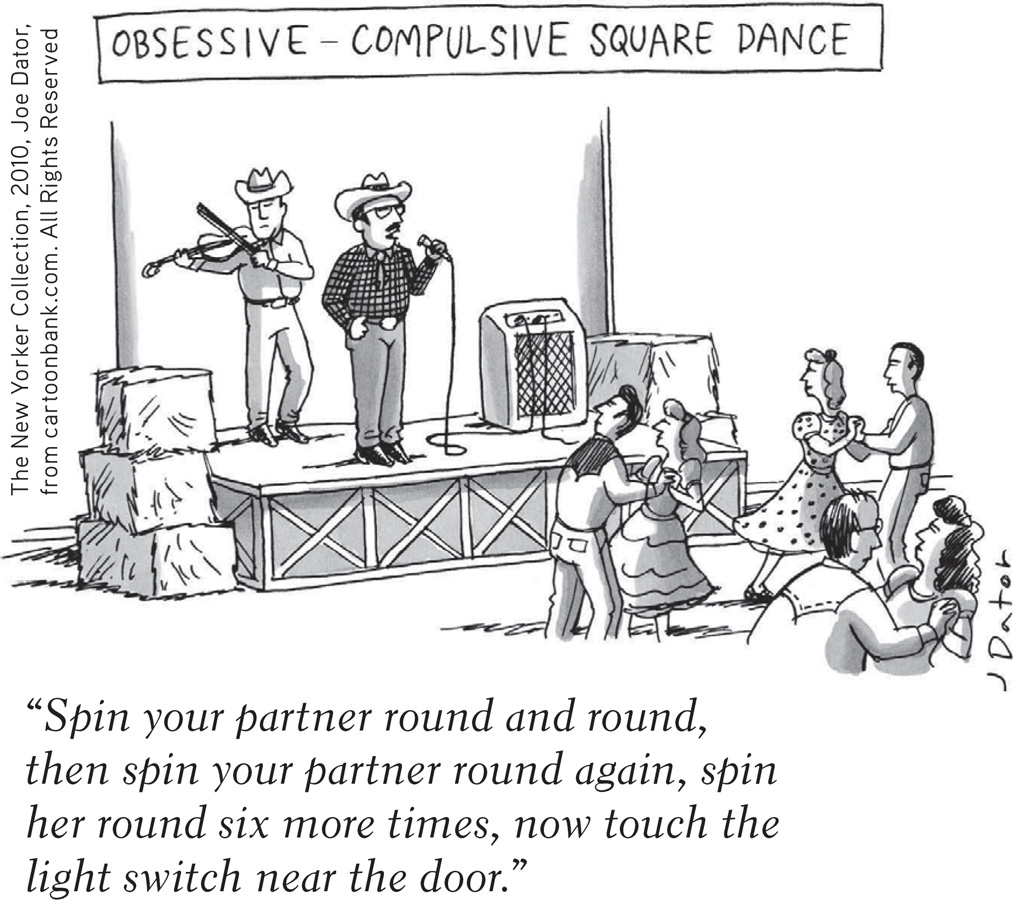
As with the anxiety disorders, we can see aspects of obsessive-compulsive disorder (OCD) in our everyday behavior. We all may at times be obsessed with senseless or offensive thoughts that will not go away. Or we may engage in compulsive behaviors, perhaps lining up books and pencils “just so” before studying.
Obsessive thoughts and compulsive behaviors cross the fine line between normality and disorder when they persistently interfere with everyday living and cause distress. Checking to see you locked the door is normal; checking 10 times is not. Washing your hands is normal; washing so often that your skin becomes raw is not. (TABLE 15.4 offers more examples.) At some time during their lives, often during their late teens or twenties, 1 to nearly 3 percent of people cross that line from normal preoccupations and fussiness to debilitating disorder (Kessler et al., 2012). An analysis of 14 twin studies showed that OCD has a strong genetic basis (Taylor, 2011). Although the person knows them to be irrational, the anxiety-
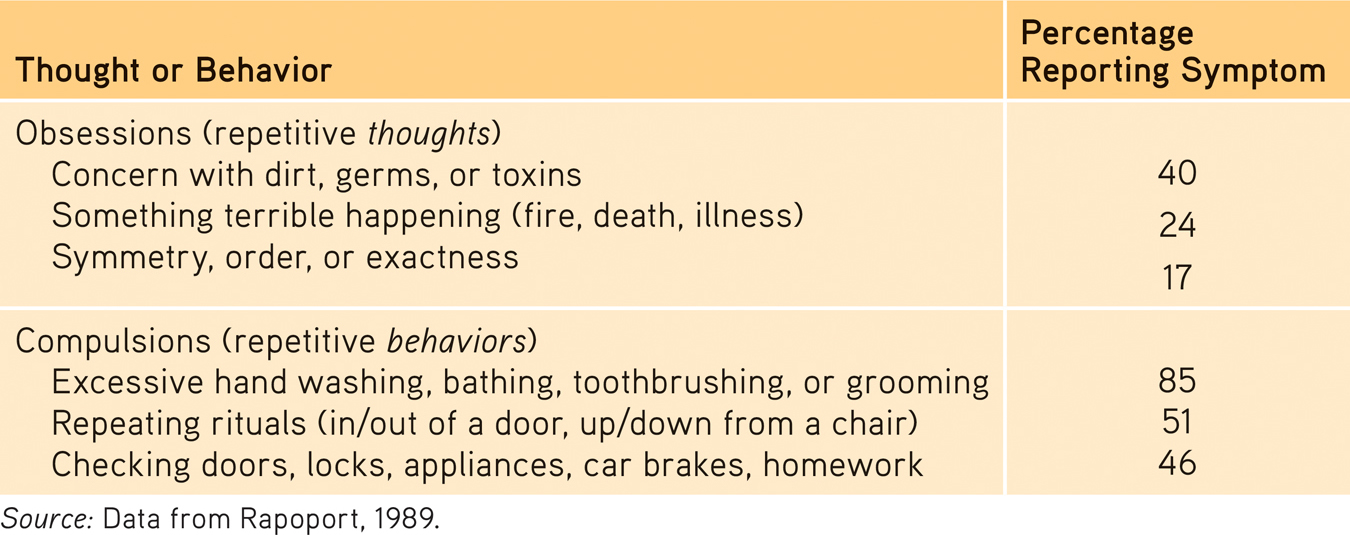
 Table 15.4
Table 15.4Common Obsessions and Compulsions Among Children and Adolescents With Obsessive-
623
 For a 7-minute video illustrating struggles associated with compulsive rituals, visit LaunchPad’s Video: Obsessive-Compulsive Disorder—A Young Mother’s Struggle.
For a 7-minute video illustrating struggles associated with compulsive rituals, visit LaunchPad’s Video: Obsessive-Compulsive Disorder—A Young Mother’s Struggle.
Former professional basketball player Royce White, who is open about his obsessive-
OCD is more common among teens and young adults than among older people (Samuels & Nestadt, 1997). A 40-

Posttraumatic Stress Disorder (PTSD)
15-
posttraumatic stress disorder (PTSD) a disorder characterized by haunting memories, nightmares, social withdrawal, jumpy anxiety, numbness of feeling, and/or insomnia that lingers for four weeks or more after a traumatic experience.
As an Iraq war soldier, Jesse “saw the murder of children and women. It was just horrible for anyone to experience.” After calling in a helicopter strike on one house where he had seen ammunition crates carried in, he heard the screams of children from within. “I didn’t know there were kids there,” he recalled. Back home in Texas, he suffered “real bad flashbacks” (Welch, 2005).
Jesse is not alone. In one study of 103,788 veterans returning from Iraq and Afghanistan, 25 percent were diagnosed with a psychological disorder (Seal et al., 2007). Some had traumatic brain injuries (TBI), but the most frequent diagnosis was posttraumatic stress disorder (PTSD). Typical symptoms include recurring haunting memories and nightmares, a numb feeling of social withdrawal, jumpy anxiety, and trouble sleeping (Germain, 2013; Hoge et al., 2004, 2006, 2007; Kessler, 2000). Although many battle-
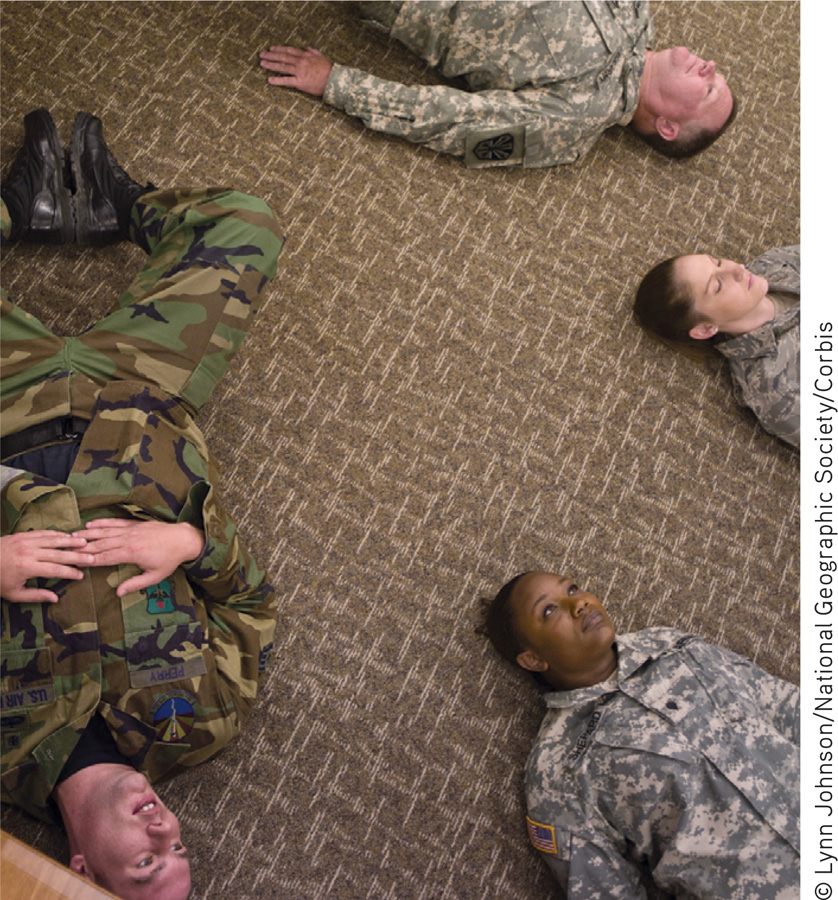
The greater one’s emotional distress during a trauma, the higher the risk for posttraumatic symptoms (Ozer et al., 2003). Among American military personnel in Afghanistan, 7.6 percent of combatants and 1.4 percent of noncombatants developed PTSD (McNally, 2012). Among New Yorkers who witnessed or responded to the 9/11 terrorist attacks, most did not experience PTSD (Neria et al., 2011). After experiencing a traumatic life event, about 5 to 10 percent of people develop PTSD (Bonanno et al., 2011). PTSD diagnoses among survivors who had been inside the World Trade Center during the attack were, however, double the rates found among those who were outside (Bonanno et al., 2006).
About half of us will experience at least one traumatic event in our lifetime. Why do some people develop PTSD after a traumatic event, but others don’t? Some people may have more sensitive emotion-
624
Some psychologists believe that PTSD has been overdiagnosed, due partly to a broadening definition of trauma (Dobbs, 2009; McNally, 2003). Too often, say some critics, PTSD gets stretched to include normal bad memories and dreams after a bad experience. In such cases, well-
Most people, male and female, display an impressive survivor resiliency, or ability to recover after severe stress (Bonanno et al., 2010). For more on human resilience and on the posttraumatic growth that some experience, see Chapter 16.
RETRIEVAL PRACTICE
- Those who express anxiety through unwanted repetitive thoughts or actions may have a(n) ______________-______________ disorder.
obsessive-
- Those with symptoms of recurring memories and nightmares, social withdrawal, jumpy anxiety, numbness of feeling, and/or insomnia for weeks after a traumatic event may be diagnosed with ______________ ______________ disorder.
posttraumatic stress
Understanding Anxiety Disorders, OCD, and PTSD
15-
Anxiety is both a feeling and a cognition—
Conditioning
Some bad events come with a warning. Your underdog team might lose the big game. You aren’t prepared and you may fail your quiz. You’re running late and might miss the bus. But when bad events happen unpredictably and uncontrollably, anxiety and other disorders often develop (Field, 2006; Mineka & Oehlberg, 2008). In a classic experiment, an infant called “Little Albert” learned to fear furry objects that were paired with loud noises. In other experiments, researchers have created anxious animals by giving rats unpredictable electric shocks (Schwartz, 1984). The rats, like assault victims who report feeling anxious when returning to the scene of the crime, became uneasy in their lab environment. The lab had become a cue for fear.
Such research helps explain why anxious people are hyperattentive to possible threats, and how panic-
625
Through conditioning, the short list of naturally painful and frightening events can multiply into a long list of human fears. Can you recall a frightening event that left you fearful for a while? We can. I [DM] was headed home when my car was struck by another when its driver missed a stop sign. For months afterward, I felt a twinge of unease as a car approached from a side street. Likewise, I [ND] remember watching a terrifying movie about spiders, Arachnophobia, when a severe thunderstorm struck and the theater lost power. For months, I experienced anxiety at the sight of spiders or harmless cobwebs.
How might conditioning magnify a single painful and frightening event into a full-
Stimulus generalization occurs when a person experiences a fearful event and later develops a fear of similar events. Each of us [DM and ND] generalized our fears: One of us feared cars approaching from side streets and the other feared spiders. Those fears eventually disappeared, but sometimes fears can linger and grow. Marilyn’s thunderstorm phobia may have similarly generalized after a terrifying or painful experience during a thunderstorm.
Once fears and anxieties arise, reinforcement helps maintain them. Anything that helps us avoid or escape the feared situation can be reinforcing because it reduces anxiety and gives us a feeling of relief. Fearing a panic attack, we may decide not to leave the house. Reinforced by feeling calmer, we are likely to repeat that maladaptive behavior in the future (Antony et al., 1992). So, too, with compulsive behaviors. If washing our hands relieves our feelings of anxiety, we may wash our hands again when those feelings return.
Cognition
Conditioning influences our feelings of anxiety, but so does cognition—
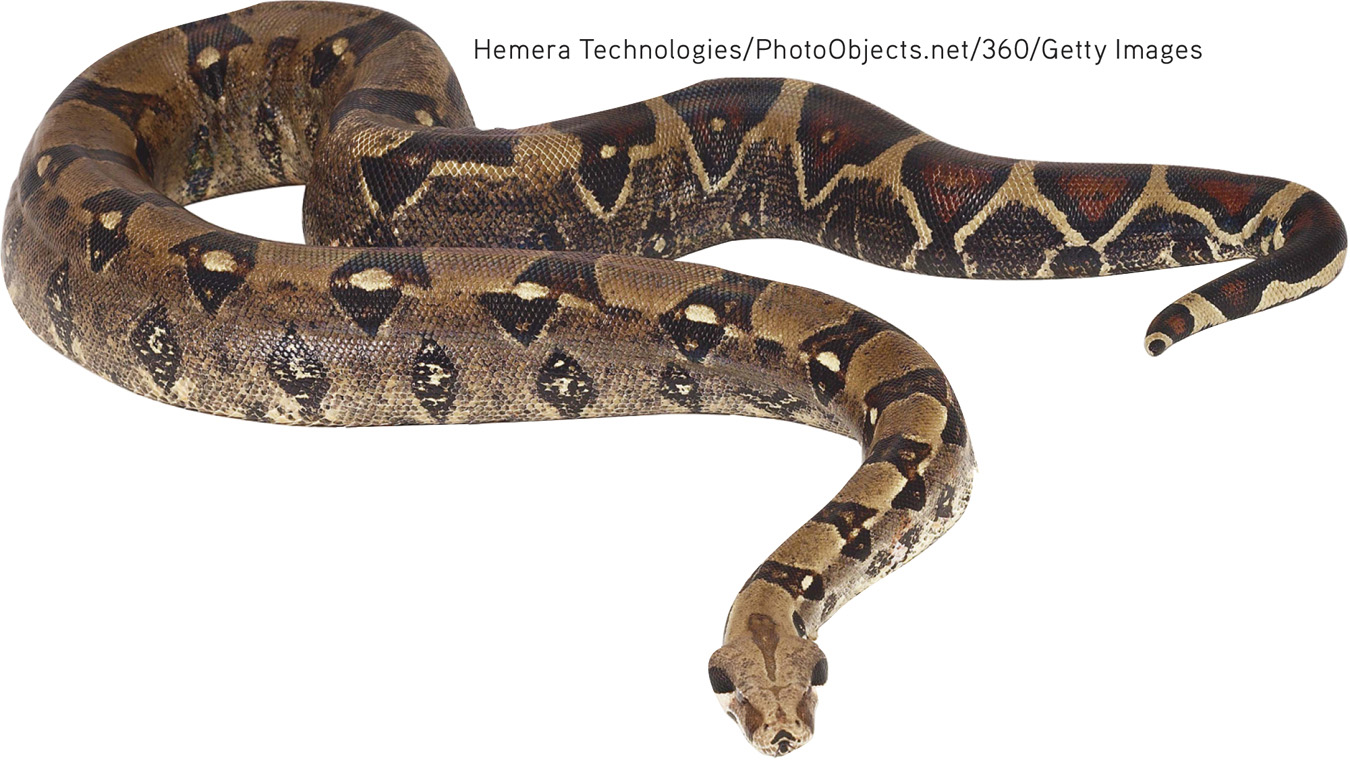
Our past experiences shape our expectations and influence our interpretations and reactions. Whether we interpret the creaky sound in the old house simply as the wind or as a possible knife-
Biology
There is, however, more to anxiety disorders, OCD, and PTSD than conditioning and cognitive processes alone. Why will some of us develop lasting phobias or PTSD after suffering traumas? Why do we all learn some fears so readily? Why are some of us more vulnerable? The biological perspective offers insight.
626
Genes Genes matter. Pair a traumatic event with a sensitive, high-
Among monkeys, fearfulness runs in families. A monkey reacts more strongly to stress if its close biological relatives are anxiously reactive (Suomi, 1986). So, too, with people. If one identical twin has an anxiety disorder, the other is likewise at risk (Hettema et al., 2001; Kendler et al., 2002a,b; Van Houtem et al., 2013). Even when raised separately, identical twins may develop similar phobias (Carey, 1990; Eckert et al., 1981). One pair of 35-
Given the genetic contribution to anxiety disorders, researchers are now sleuthing the culprit genes. One research team identified 17 gene variations associated with typical anxiety disorder symptoms (Hovatta et al., 2005). Other teams have found genes associated specifically with OCD (Taylor, 2013).
Genes can influence disorders by regulating neurotransmitters. Some studies point to an “anxiety gene” that affects brain levels of serotonin, a neurotransmitter that influences sleep, mood, and attention to negative images (Canli, 2008; Pergamin-
Among PTSD patients, a history of child abuse leaves long-
The Brain Our experiences change our brain, paving new pathways. Traumatic fear-
Anxiety-
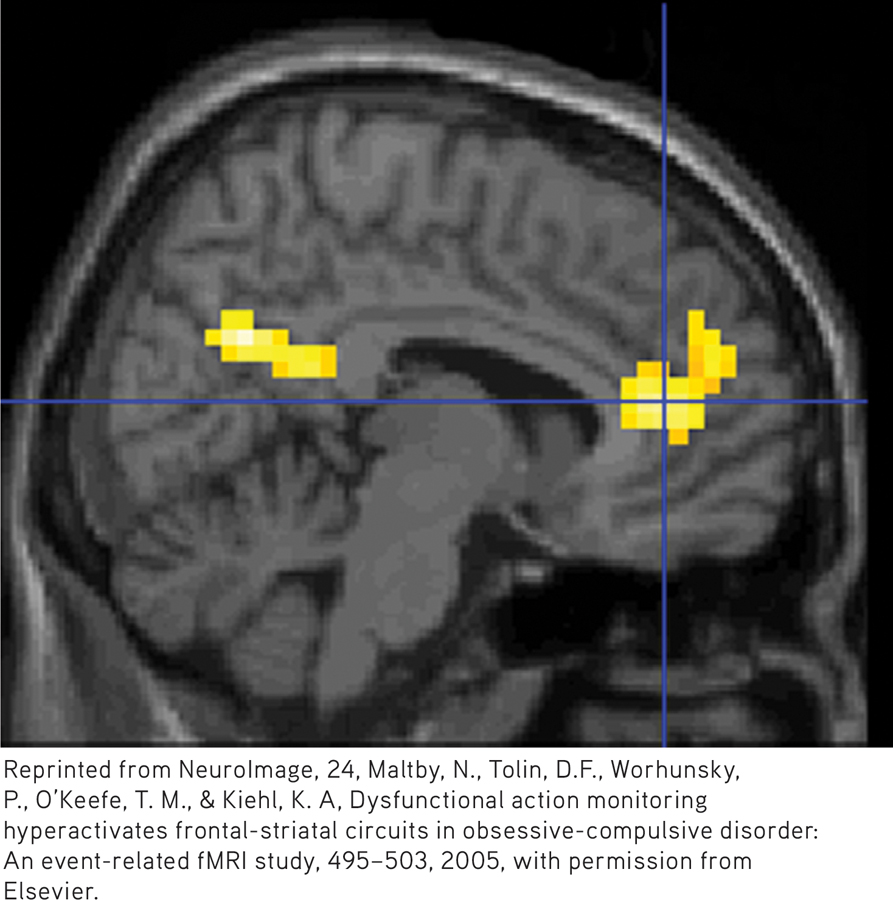
 Figure 15.4
Figure 15.4An obsessive-
Some antidepressant drugs dampen this fear-
Natural Selection We seem biologically prepared to fear threats faced by our ancestors. Our phobias focus on such specific fears: spiders, snakes, and other animals; enclosed spaces and heights; storms and darkness. (Those fearless about these occasional threats were less likely to survive and leave descendants.) Thus, even in Britain, with only one poisonous snake species, people often fear snakes. It is easy to condition and hard to extinguish fears of such “evolutionarily relevant” stimuli (Coelho & Purkis, 2009; Davey, 1995; Öhman, 2009). Some of our modern fears can also have an evolutionary explanation. A fear of flying may be rooted in our biological predisposition to fear confinement and heights.
627

Compare our easily conditional fears to what we do not easily learn to fear. World War II air raids, for example, produced remarkably few lasting phobias. As the air blitzes continued, the British, Japanese, and German populations did not become more and more panicked. Rather, they grew more indifferent to planes outside their immediate neighborhoods (Mineka & Zinbarg, 1996). Evolution has not prepared us to fear bombs dropping from the sky.
Just as our phobias focus on dangers faced by our ancestors, our compulsive acts typically exaggerate behaviors that contributed to our species’ survival. Grooming gone wild becomes hair pulling. Washing up becomes ritual hand washing. Checking territorial boundaries becomes rechecking an already locked door (Rapoport, 1989).
RETRIEVAL PRACTICE
- Researchers believe that conditioning and cognitive processes contribute to anxiety disorders, OCD, and PTSD. What biological factors also contribute to these disorders?
Biological factors include inherited temperament differences and other gene variations; learned fears that have altered brain pathways; and outdated, inherited responses that had survival value for our distant ancestors.
REVIEW: Anxiety Disorders, OCD, and PTSD

|
REVIEW | Anxiety Disorders, OCD, and PTSD |
LEARNING OBJECTIVES
RETRIEVAL PRACTICE Take a moment to answer each of these Learning Objective Questions (repeated here from within this section). Then click the 'show answer' button to check your answers. Research suggests that trying to answer these questions on your own will improve your long-term retention (McDaniel et al., 2009).
15-
Anxious feelings and behaviors are classified as an anxiety disorder only when they form a pattern of distressing, persistent anxiety or maladaptive behaviors that reduce anxiety. People with generalized anxiety disorder feel persistently and uncontrollably tense and apprehensive, for no apparent reason. In the more extreme panic disorder, anxiety escalates into periodic episodes of intense dread. Those with a phobia may be irrationally afraid of a specific object, activity, or situation. Two other disorders (OCD and PTSD) involve anxiety but are classified separately from the anxiety disorders.
15-
Persistent and repetitive thoughts (obsessions), actions (compulsions), or both characterize obsessive-compulsive disorder (OCD).
15-
Symptoms of posttraumatic stress disorder (PTSD) include four or more weeks of haunting memories, nightmares, social withdrawal, jumpy anxiety, numbness of feeling, and/or sleep problems following some traumatic experience.
15-
The learning perspective views anxiety disorders, OCD, and PTSD as products of fear conditioning, stimulus generalization, fearful-behavior reinforcement, and observational learning of others’ fears and cognitions (interpretations, irrational beliefs, and hypervigilance). The biological perspective considers the role that fears of life-threatening animals, objects, or situations played in natural selection and evolution; genetic predispositions for high levels of emotional reactivity and neurotransmitter production; and abnormal responses in the brain’s fear circuits.
TERMS AND CONCEPTS TO REMEMBER
RETRIEVAL PRACTICE Match each of the terms on the left with its definition on the right. Click on the term first and then click on the matching definition. As you match them correctly they will move to the bottom of the activity.
Question
anxiety disorders generalized anxiety disorder panic disorder phobia obsessive-compulsive disorder (OCD) posttraumatic stress disorder (PTSD) | an anxiety disorder marked by a persistent, irrational fear and avoidance of a specific object, activity, or situation. an anxiety disorder marked by unpredictable, minutes-long episodes of intense dread in which a person experiences terror and accompanying chest pain, choking, or other frightening sensations. Often followed by worry over a possible next attack. psychological disorders characterized by distressing, persistent anxiety or maladaptive behaviors that reduce anxiety. an anxiety disorder in which a person is continually tense, apprehensive, and in a state of autonomic nervous system arousal. a disorder characterized by unwanted repetitive thoughts (obsessions), actions (compulsions), or both. a disorder characterized by haunting memories, nightmares, social withdrawal, jumpy anxiety, numbness of feeling, and/or insomnia that lingers for four weeks or more after a traumatic experience. |
Use  to create your personalized study plan, which will direct you to the resources that will help you most in
to create your personalized study plan, which will direct you to the resources that will help you most in  .
.
628